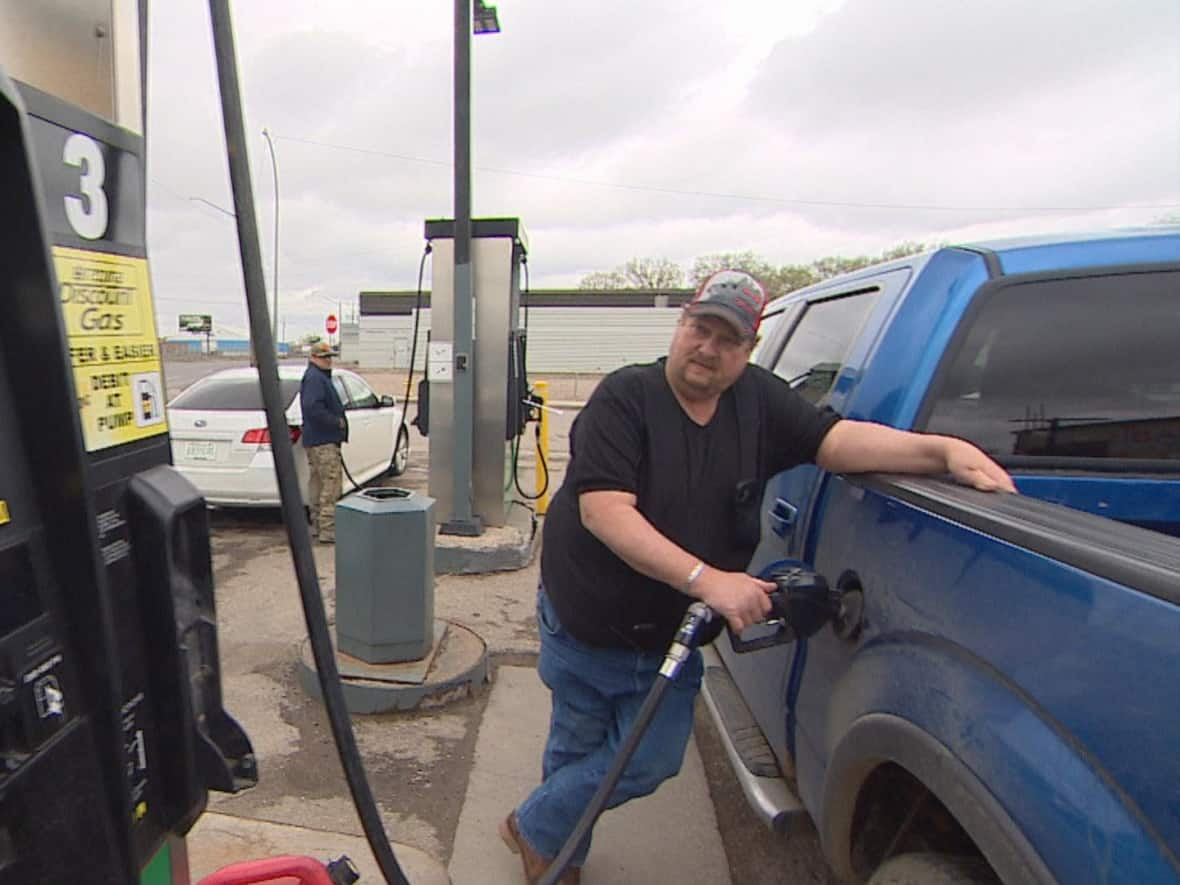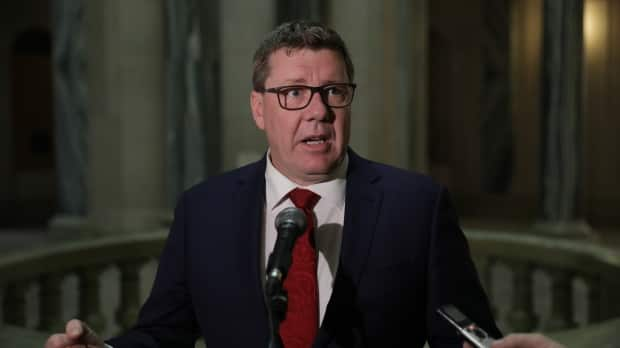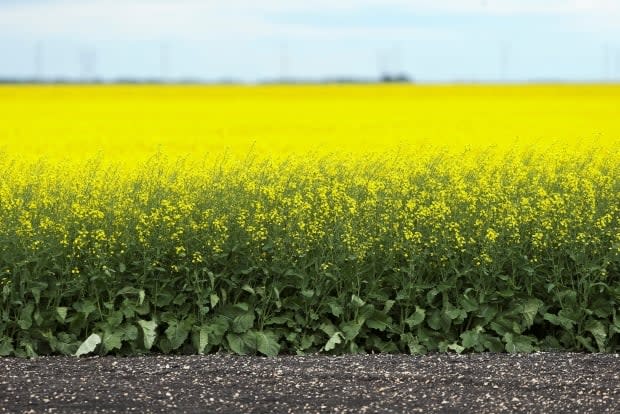New federal fuel regulations are coming soon — here's what you can expect

In just three weeks, new federal regulations will take effect that look to gradually replace the most polluting automotive fuels with cleaner alternatives.
Eventually, those Clean Fuel Regulations will make gasoline more expensive. The federal Conservatives and the Canadian Taxpayers Federation have taken to calling them "carbon tax 2.0" or "the second carbon tax." Premiers in Atlantic Canada are urging Ottawa to postpone or reverse them.
This week, Saskatchewan Premier Scott Moe joined their campaign.
"I agree with my Atlantic counterparts, premiers from Atlantic Canada, that have called on the federal minister to delay the implementation of these to ensure that the minister is doing proper and appropriate consultation," he told CBC News.
"The clean fuel standard has a potential for quite a disproportionate impact in various areas of the nation."
So what are the federal Clean Fuel Regulations? How do they work?

Federal regulations already require a minimum percentage of biofuels in gasoline and diesel. Starting July 1, a new regime will replace those rules.
The new regulations are meant to cut the "carbon intensity" of automotive fuels sold on the Canadian market — how much they generate in emissions for a given amount of energy. Unlike the current rules, the new ones cover the entire life cycle of fuels, from production and transport to consumption.
The goal is to push companies that produce or import fuel to gradually reduce the emissions intensity of that process by setting a ceiling and dropping it each year. By 2030, the rules will require a 15 per cent cut in emissions intensity compared to 2016 levels.
Producers could comply with the new rules in different ways. They could put more ethanol in their gasoline, use more biodiesel or find innovative ways of reducing their refineries' emissions through, for example, carbon capture and storage.
Producers that come in below the federal government's emissions intensity ceiling will earn extra credits they can sell. Other producers can buy those credits if their fuels fall short.
It's also possible for others to earn credits through investments in, for example, electric vehicle charging stations, and to sell those credits to fuel producers.
How much will they cost?
The new Clean Fuel Regulations come into force on July 1 but refineries will have a year to comply. The federal government says it doesn't think consumers will notice any added costs right away.
Environment and Climate Change Canada (ECCC) says the regulations' impact on gas prices will be "minimal" for the next few years — since producers should be able to meet the standards by taking steps they probably would have taken anyway.
ECCC predicts that by 2030, consumers should see some added costs when filling their tanks, although the department isn't certain how big the price bump will be. It estimates a price increase at the pumps by 2030 of anywhere between six and 13 cents per litre for gasoline, depending on how refineries comply.
The Parliamentary Budget Office (PBO) predicts a price increase of 17 cents per litre.
That's on top of the 37 cents the carbon tax will add to a litre of gasoline by 2030.
The economic cost will be a hit to GDP of roughly $9 billion and a cut to emissions of about 27 million tonnes in 2030, says an ECCC regulatory impact analysis.
The government estimates that by 2040, the regulations will have cut emissions by around 200 million tonnes at a cost to GDP of $30 billion. Given how much each tonne of carbon costs society in increased climate warming, the government calculates that it's a good bargain.
Is this just another carbon tax?
Strictly speaking, no. A carbon tax imposes a surcharge on every litre of fuel based on its carbon content. The Clean Fuel Regulations work differently, since they only penalize the dirtiest fuels.
"It's almost like a carbon tax, but it doesn't put the charge on every litre, so it can do more to encourage efficiency or fuel switching toward low carbon fuels or low carbon electricity without having the same price impacts on the fuel itself," said climate economist Mark Jaccard, a professor at Simon Fraser University and an expert on clean fuel standards.
The regulations actually work more like a cap-and-trade system, which provincial governments used well before the federal carbon tax.
"It's like a cap-and-trade system for intensity as opposed to absolute emissions," said Jaccard.
And the federal government itself won't collect a dime from the regulations. Instead, the money moves from producers of polluting fuels to producers of clean energy, making the cleaner fuels cheaper.
"Those who make biofuels, those who make hydrogen, those who make electricity, they actually get money coming into their pockets, because the higher intensity sellers of fuels have to buy credits from them," Jaccard said.
The Supreme Court of Canada also found that the federal government's carbon pricing system isn't really a tax. That hasn't stopped Conservative Leader Pierre Poilievre, Moe and other critics from calling it one.
Jaccard said it doesn't really matter if the emissions reduction tool is called a tax or a regulation — because in order to work, the tool must increase the cost at the pumps.
"The effect to the consumer is no different," Jaccard said.
Who wins, who loses?
In a recent analysis, the PBO concluded that the regulations would hit people differently depending on how much they earn and where they live.
Since low-income people use a higher portion of their earnings on fuel, they'll feel more pain. So will the Atlantic and Prairie provinces. The PBO predicts the regulations will cost an average Saskatchewan household $1,117 and the average Alberta household $1,157 in 2030.
Those totals come from higher fuel costs, inflated prices for other goods and impacts on wages and other earnings. In B.C., the PBO says the hit will add up to just $384 in 2030 for the average household.
The economic toll will also vary widely. In Newfoundland and Labrador, real GDP is forecast to be about one per cent lower in 2030 than it would have been without the regulations. Saskatchewan would be the next worst off, with a hit of 0.9 per cent that year, the PBO found.
Moe said those are good reasons to hit pause and look for ways to limit the damage for the regions that will feel it more.
"Slow down, understand what the economic impacts are, work with the industry on what's achievable," he said.
In its regulatory impact assessment, ECCC said it conducted years of consultations with industry. It cited a long list of working groups, committees and consultation documents that resulted in hundreds of comments on the regulations. It said provinces were "heavily engaged."
Despite the PBO report and Moe's concerns, Jaccard said he's not convinced the regulations will have a great negative impact on provinces like Saskatchewan and Alberta.
"A clean fuel standard in transportation would not have markedly different regional costs or transfers going on," he said. "I've read no evidence for that."
He said the the Prairie provinces also stand to benefit from the regulations.
"In B.C. when we buy the biofuels, we buy them from the Prairies," said Jaccard.

Chris Vervaet, executive director of the Canadian Oilseed Processors Association, said he also thinks the regulations will benefit his industry. He said his group was "heavily involved" in their development.
"We're optimistic that the Clean Fuel Regulations will be a demand driver for our low-carbon feedstock," he told CBC News.
Vervaet said he's already seeing billions of dollars of investment in new processing facilities. He predicted the regulations will give producers a chance to diversify away from unpredictable markets like China.
"We have a market here in Canada that is more predictable, so that's a huge advantage," he said.
That could explain why Moe — who never has a single nice word to say about carbon taxation — has been less ferocious in his opposition to the Clean Fuel Regulations. He acknowledged they have the "ability" to rein in emissions and could even bring benefits to agriculture in his province.
"There quite likely is a path through, as I say, consulting with industries, consulting with the provinces, in putting together a policy in this space that likely is workable," he said.


